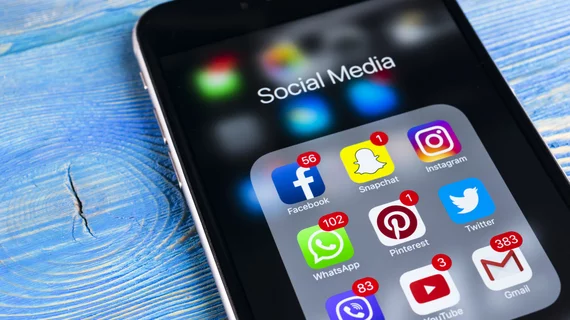5 tips for radiologists who want to get more out of social media
As the impact and influence of social media continues to grow, how can radiologists and other imaging professionals use it to their advantage? A new commentary piece published by the Journal of the American College of Radiology addresses this very question.
Authors Priscilla J. Slanetz, MD, Beth Israel Deaconess Medical Center in Boston, and Lori Ann Deitte, MD, Vanderbilt University School of Medicine in Nashville, asked five specialists if they had any advice for radiologists looking to use social media sites such as Twitter and Facebook as a part of their practice.
These are five of the article’s most helpful suggestions:
1. Don’t be afraid to jump in
“The pros exceedingly outweigh the cons, and anyone at any age can dive in to embrace the world of health care social media,” said Amy K. Patel, MD, of the University of Missouri-Kansas City School of Medicine. “Maintaining a constant presence is key, and thus, having someone overseeing your department or practice accounts can be beneficial if such assistance is potentially available to you.”
Patel added, however, that personal input is still important if you want your social media accounts to make a real difference. This means it does require users to commit a certain amount of time to using social media, but it will be a commitment “you never regret.”
2. Mingle and network
One key advantage to using social media accounts is that you will cross paths with other professionals who are doing the exact same thing. You meet people you may have never met otherwise—and those people often become friends who you will be have for your entire career.
“Many of the radiologists and radiation oncologists I met on Twitter I eventually did end up meeting in real life because of our Twitter connection,” said Andrea Borondy Kitts, patient outreach and research specialist at Lahey Hospital and Medical Center in Burlington, Massachusetts. “Some of these contacts resulted in collaborative work on projects and grants.”
Dania Daye, MD, PhD, a resident at Massachusetts General Hospital in Boston, shared a similar experience.
“Joining Twitter has accelerated my professional development and has led to national committee service and interactions with national leaders in radiology,” Daye said. “Those opportunities would have been otherwise difficult to access without social media. The use of social media in radiology has also been most helpful at national radiology meetings where it amplifies networking with others both at the meeting and beyond and allows for vibrant discussions about important topics in the field.”
Those discussions, Daye added, can often take place during “tweet chats,” which allow anyone curious about the subject matter to tune in by following specific hashtags and key words.
3. Make international connections
One of the biggest benefits of social media is the ability to communicate with people all over the world who share your interests. Radiologists can gain a lot from such connections.
“I am grateful that a neurosurgeon in the United Kingdom spotted several errors in my neuroanatomy teaching material,” said Stefan Tigges, MD, of the Emory University School of Medicine in Atlanta. “I exchange cartoons with surgeons and internists from all over the world. I have learned a ton about the struggles of our own referring physicians and our international brothers and sisters.”
4. Include pictures when you post
Tigges also discussed the importance of using pictures to get attention on social media. By adding up to four images to a Twitter post, for example, you have a much higher chance of getting someone scrolling on their phone to stop and see what you have to say.
5. Be silly every now and then
“Have some fun: go ahead and retweet that cat video,” Tigges said.

